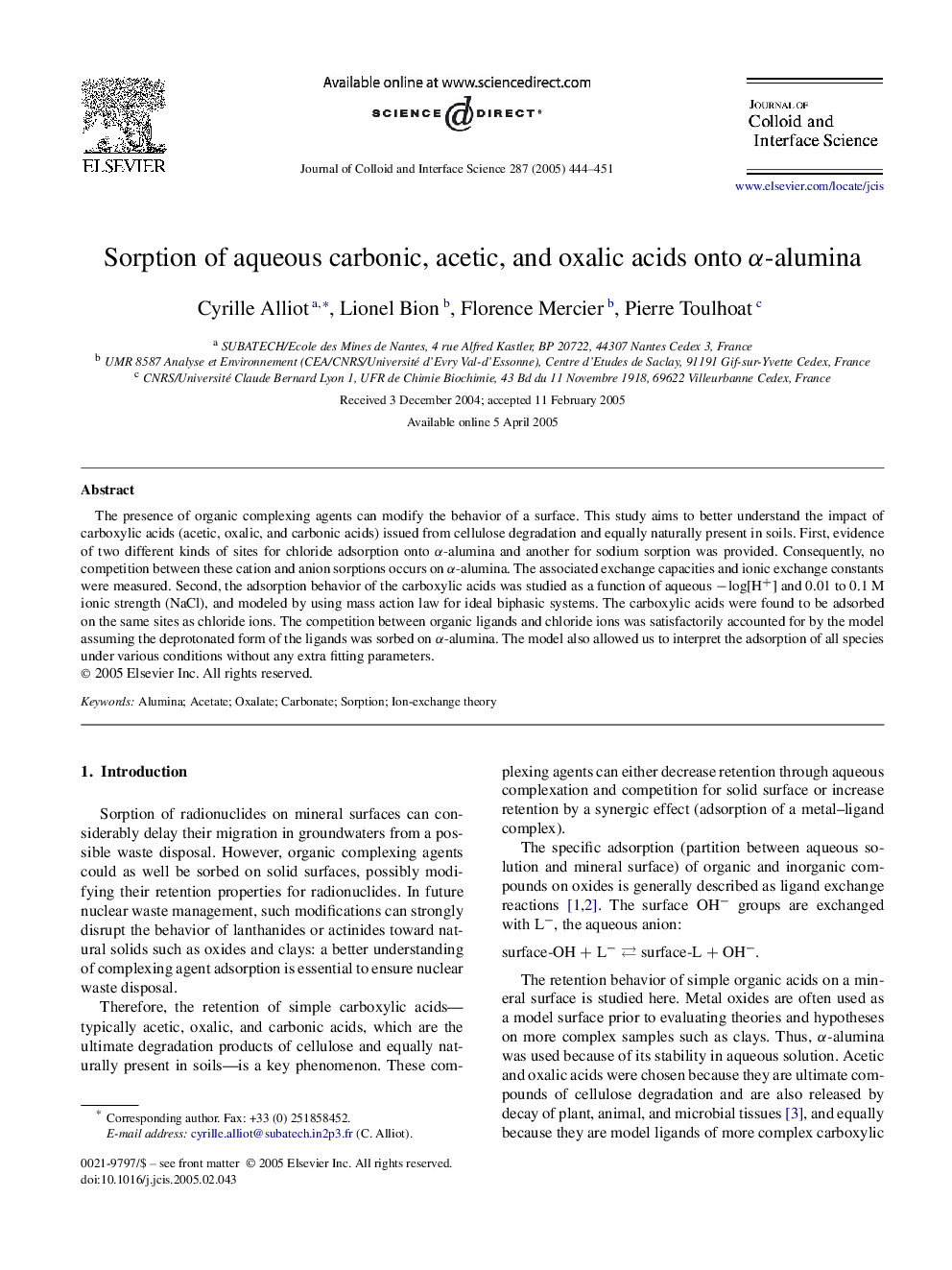| Article ID | Journal | Published Year | Pages | File Type |
|---|---|---|---|---|
| 10377768 | Journal of Colloid and Interface Science | 2005 | 8 Pages |
Abstract
The presence of organic complexing agents can modify the behavior of a surface. This study aims to better understand the impact of carboxylic acids (acetic, oxalic, and carbonic acids) issued from cellulose degradation and equally naturally present in soils. First, evidence of two different kinds of sites for chloride adsorption onto α-alumina and another for sodium sorption was provided. Consequently, no competition between these cation and anion sorptions occurs on α-alumina. The associated exchange capacities and ionic exchange constants were measured. Second, the adsorption behavior of the carboxylic acids was studied as a function of aqueous âlog[H+] and 0.01 to 0.1 M ionic strength (NaCl), and modeled by using mass action law for ideal biphasic systems. The carboxylic acids were found to be adsorbed on the same sites as chloride ions. The competition between organic ligands and chloride ions was satisfactorily accounted for by the model assuming the deprotonated form of the ligands was sorbed on α-alumina. The model also allowed us to interpret the adsorption of all species under various conditions without any extra fitting parameters.
Related Topics
Physical Sciences and Engineering
Chemical Engineering
Colloid and Surface Chemistry
Authors
Cyrille Alliot, Lionel Bion, Florence Mercier, Pierre Toulhoat,
